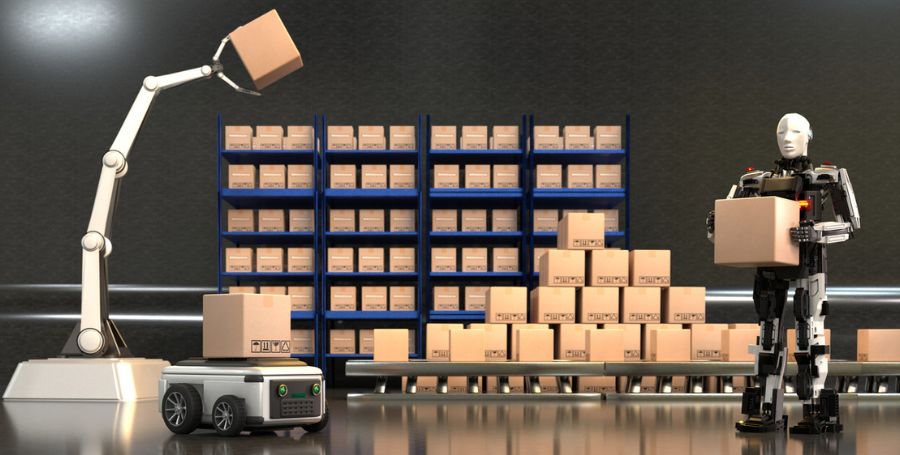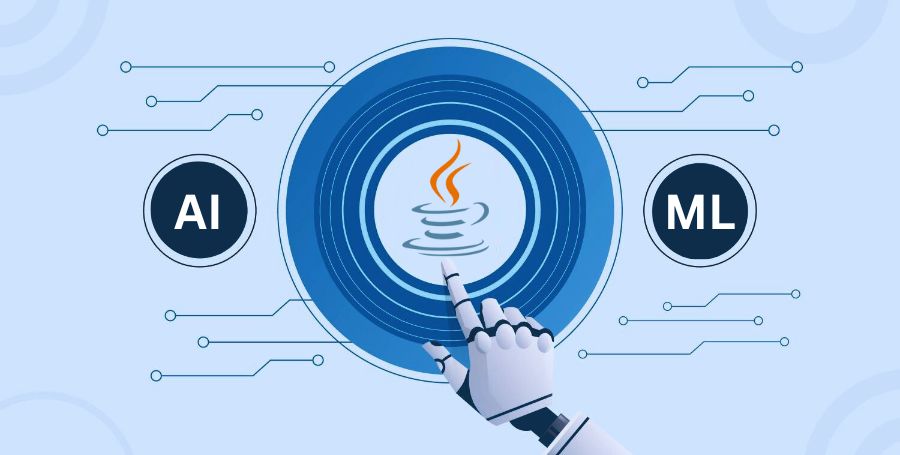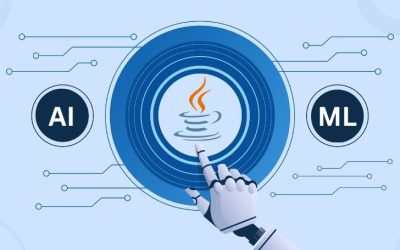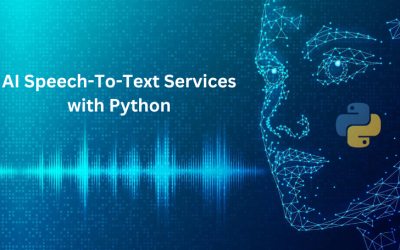When it comes to the aviation industry, both safety and streamlined performance are non-negotiable. Aerial vehicle dependability is a core component of the industry. Passengers board flights with an implicit trust in the seamless functioning of these technical marvels.
Conventional maintenance methods have limitations and restrictions. Here’s where Predictive Maintenance comes in: it uses Artificial Intelligence to address possible problems, revitalize maintenance approaches, and improve reliability.
In this blog, let’s examine the revolutionary role of artificial intelligence in predictive maintenance. Explain how it can improve aircraft reliability and influence the direction of aviation maintenance procedures going forward.
Introducing the idea of Predictive Maintenance in the aviation sector
Instead of waiting for anything to go wrong, predictive maintenance uses an intelligent technology called artificial intelligence to predict potential problems before they arise. This ingenious system helps maintain airplane reliability by repairing problem as soon as they occur, cutting down on the various times the aircraft spends in the shop. Predictive care is not only about doing repairs when anything breaks; It is also about maintaining the aircraft in a safe, economical, and operational manner.
A Quick Overview of the Condition of Airplane Maintenance at the Moment
Currently, aircraft are maintained using old methods like regular check-ups. Occasionally, some parts are checked and changed according to a predetermined time or flight duration, which is comparable to getting your automobile serviced regularly. Despite the flaws, this has worked.
At times, we replace components without considering the differences in how each plane is used, despite the possibility that the parts may still be valuable. As technology advances, we are becoming aware of better options. Predictive maintenance anticipates when components may need repair, ensuring that maintenance is performed only when necessary and maximizing the various times the aircraft is in the air.
Challenges and Limitations of Routine Maintenance
The typical maintenance plan used by airlines is problematic because it involves either waiting for something to go wrong or adhering to a strict schedule. Waiting until something fails might result in unforeseen complications that increase downtime and repair costs. However, rigorous adherence to a plan may result in replacing components that still have life left, which would cost money. It is similar to updating the parts of your car, whether it is still functional or fixed when something goes wrong.
Additionally, different aircraft have different requirements, depending on how often they are flown. Because of the existing approach’s disregard for these variations, maintenance is less effective.
In a nutshell, the problems with the standard approach are unplanned malfunctions, needle replacement, and failure to customize maintenance to the specific needs of each aircraft. Predictive maintenance may help with these issues by employing artificial intelligence and other modern technologies to make intelligent forecasts. It saves money and increases the frequency of aircraft in the skies by enabling us to address problems before they become serious ones.
What Sets Predictive Maintenance Apart from Conventional Maintenance Practices?
Using traditional processes is like replacing your automobile when it breaks down or while the parts are still working; We wait for things to break down or follow a predetermined schedule for checkups. What sets Predictive Maintenance apart is the use of technology—particularly Artificial Intelligence – to forecast when components may require repair. We can make repairs precisely when they are needed, preventing unplanned malfunctions and saving money. With the use of technology and forecasts, aviation maintenance is becoming more proactive instead of reactive.
Overview of AI Technologies in Aviation
AI can be defined as a computer system that uses data for learning purposes. In aviation, technology collects and analyzes vast data about aircraft, including their flight characteristics and component conditions. AI enables us to recognize trends and anticipate when repairs might be necessary. It is similar to having an intelligent assistant for airplanes that manages data to maintain them in excellent condition.
The Collaboration between AI and Predictive Maintenance
Consider AI and Predictive Maintenance as the dynamic duo driving the aviation industry. AI is the ideal companion because of its capacity for learning and prediction. Predictive maintenance is made even better by having a superhero’s sidekick. AI utilizes a large amount of data, including usage patterns and component status, to gain knowledge about aircraft. With this information, it can then determine whether problems are likely to arise in the future. Together, they devise a cunning strategy that addresses issues before they become bigger ones. Preventing issues from arising in the first place is more significant than merely repairing what is damaged.
AI and predictive maintenance working together is revolutionizing aircraft maintenance, making it more intelligent, effective, and most importantly- safer and more reliable for air travel.
Aviation’s Implementation of Predictive Maintenance
Sensor Technologies and Their Role in Data Collection
Think of sensors as an airplane’s eyes and ears. They function as little assistants, gathering information on anything from engine vibrations to aircraft temperature. Since these sensors provide data in real-time, they are essential. It’s similar to having an aircraft health check, and these sensors provide us with the necessary information.
Analytical Processes and Algorithms Based on Machine Learning in Predictive Modelling
They interpret all the data that the sensors have collected. It’s like a super smart friend who can spot potential problems by analyzing trends. Algorithms for machine learning gain knowledge from historical data to forecast future problems. Predictive Maintenance is proactive because of technology; it fixes issues before they worsen. Maintaining the proper operation of airplanes requires more than simply looking at data; it also requires generating intelligent forecasts.
Integration of AI into Existing Aviation Maintenance Systems
Modernizing a low-tech tool with a high-tech gadget is analogous to integrating AI into airplane maintenance. The objective is to incorporate AI’s capabilities into the current aviation maintenance systems. This link further improves the efficiency of predictive maintenance. To ensure that airplanes are maintained to the highest standards, AI joins the team and works in tandem with the present systems. It’s like having a tech-savvy assistant who enhances general aviation maintenance procedures.
AI-driven predictive maintenance can lead to three revolutionary benefits for the aviation industry.
Improved Aircraft Reliability and Availability
AI-driven Predictive Maintenance acts as an indispensable reliability booster for airplanes. It operates like a futuristic crystal ball, foreseeing potential issues before they disrupt operations. Predicting when specific parts might need attention significantly reduces unexpected breakdowns and keeps planes in the sky more consistently. This proactive approach translates to less downtime, more reliable flights, and heightened confidence among both passengers and airlines. The technology acts as a guardian, ensuring that planes operate smoothly and there are no surprises.
Cost Savings through Optimized Maintenance Scheduling
AI-driven Predictive Maintenance transforms into a financial wizard, optimizing maintenance schedules and delivering substantial cost savings. Unlike traditional methods that might replace parts too early or too late, leading to unnecessary expenses, Predictive Maintenance focuses on efficiency. It’s akin to having a savvy planner who schedules maintenance precisely when needed, preventing avoidable costs and maximizing the lifespan of critical components. The financial efficiency benefits both airlines and the aviation fleet’s sustainability and longevity.
Enhanced Safety and Reduced Risk of In-flight Incidents
Implementing predictive maintenance powered by AI adds another layer of safety to flights. By addressing potential problems before they escalate, the technology acts as a safety net, ensuring a smooth and safe journey for passengers. This enhanced focus on safety not only builds confidence among passengers but also sets a new benchmark for excellence in aviation safety standards.
AI Development Services are having a massive impact on how we maintain airplanes. It’s helping us move from fixing issues after they happen to stop them before they occur. This shift has led to more reliable aircraft, less time spent on repairs and increased confidence from both operators and passengers. The teamwork between AI and maintenance not only makes operations smoother but also improves safety in the aviation industry. Through this collaboration, we are moving toward maintenance that can predict issues and handle them accurately and efficiently, which is a significant change.
In the future, AI-powered aviation maintenance appears promising. As technology advances, we can expect more advanced AI tools that will enhance our ability to predict and prevent problems. With improvements in sensor tech and learning algorithms, the industry is on track to achieve new levels of efficiency and safety. AI is likely to become even more involved in solving problems before they happen. The combination of AI and aviation maintenance is set to transform the industry, bringing us to a time when operations, safety, and reliability reach new heights.







